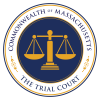- Trial Court Law Libraries
Joseph Story (1779-1845), lawyer and associate justice of the U.S. Supreme Court, set the bar high in the early years of our country by writing the formative treatises of American legal scholarship. His publications included Commentaries on the Law of Bailments (1832); Commentaries on the Constitution of the United States (3 vols., 1833), long held to be the standard treatise on the subject; Commentaries on the Conflict of Laws (1834), Commentaries on Equity Jurisprudence (2 vols., 1835-1836); Equity Pleadings (1838); Law of Agency (1839); Law of Partnership (1841); Law of Bills of Exchange (1843); and Law of Promissory Notes (1845).
As American law developed through the nineteenth century, treatises written by acknowledged experts in their fields were relied upon as guides to understanding principles inherent in the law. “American treatises poured forth, culminating in the vast works – or the ultimate treatises, as they have been called – of Wigmore, Williston, Corbin, and Scott.”*
In contrast to urging a reliance on a framework of concepts written in a treatise, Christopher C. Langdell, dean of Harvard Law School from 1870 to 1895, developed a method of teaching the law using primary source material and inductive reasoning. His case method changed the way the lawyers were educated ever after, and contributed to transforming the legal profession. In addition to relying on treatises written by experts in their fields, practitioners were now encouraged to think for themselves.
Today, Law Schools are reexamining their mission. They are faced with a dilemma arising from the expense of a legal education, dimmer prospects of jobs for their graduates, and demands from law firms looking for “practice-ready attorneys”. While legal scholars see a research role for themselves in law schools, the law firms that are hiring graduates are looking for the kind of training that produces practical skills in newly minted lawyers. Will legal literature devolve into a series of “how-to” manuals outlining discrete tasks? Probably not.
So what of the role of the treatise in the twenty-first century?
Williston on Contracts is still published and supplemented, cited by the courts, and depended upon for guidance in analyzing and understanding the law.
Scott’s work on trusts has been eclipsed by the Bogerts’ The Law of Trust and Trustees or the one volume Loring and Rounds: A Trustee’s Handbook.
Justice Paul Liacos first collaborated with W. Barton Leach on the fourth edition (1967) of The Handbook on Massachusetts Evidence. The 2015 edition of this leading treatise on Massachusetts evidence law was updated and revised by Mark S. Brodin and Michael Avery.
Suppression Matters under Massachusetts Law, narrowly focused on search and seizure law in Massachusetts, is one of the most borrowed titles in the Massachusetts Trial Court Law Libraries.
Bobrowski’s Handbook of Massachusetts Land Use and Planning Law is often referred to for understanding the intricacies of zoning law.
Legal treatises remain a source to consult when looking for an authoritative commentary on a narrow topic. The treatises mentioned above and more are available at your local Trial Court Law Library.
*Simpson, A.W.B., “The Rise and Fall of the Legal Treatise: Legal Principles and the Forms of Legal Literature”, University of Chicago Law Review 48 (1981): 674.
